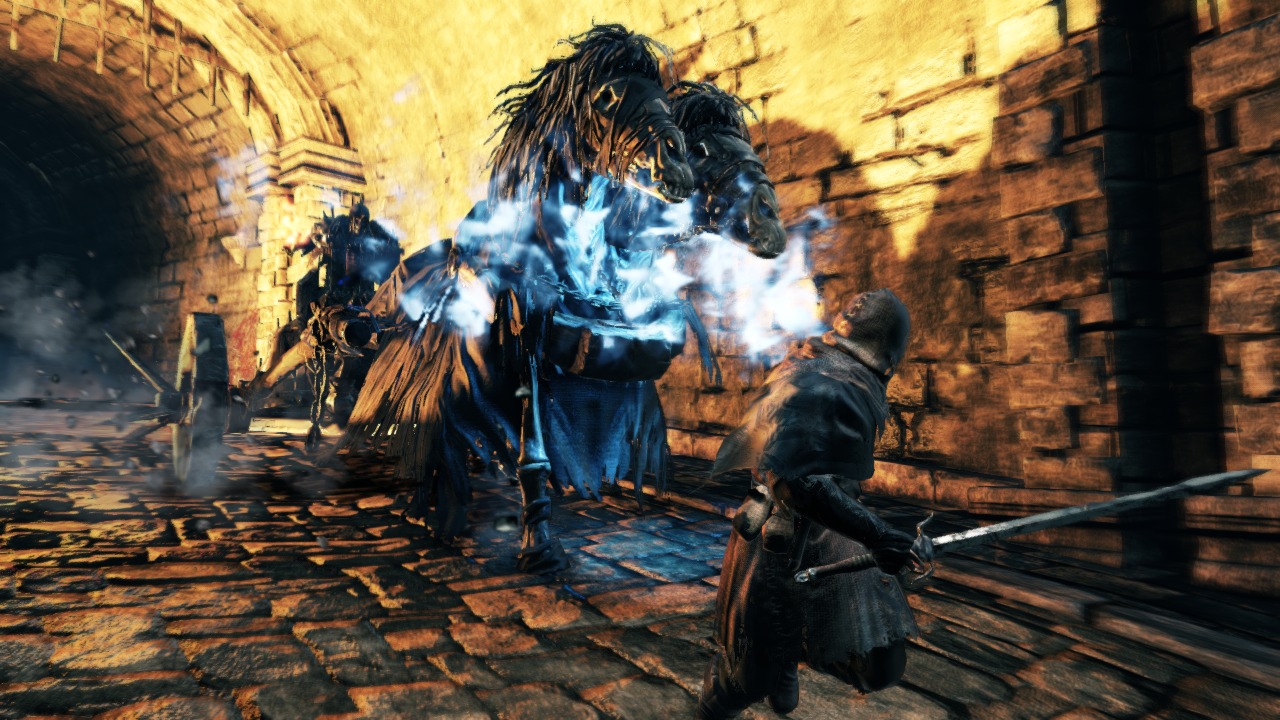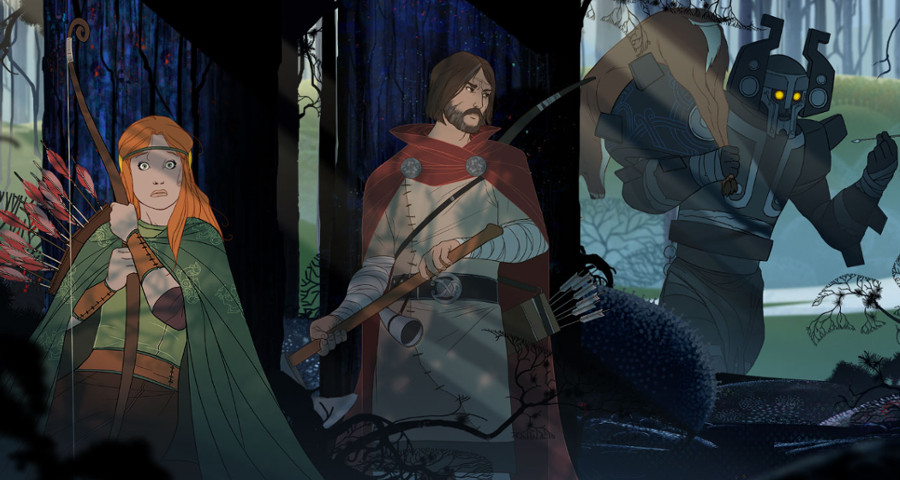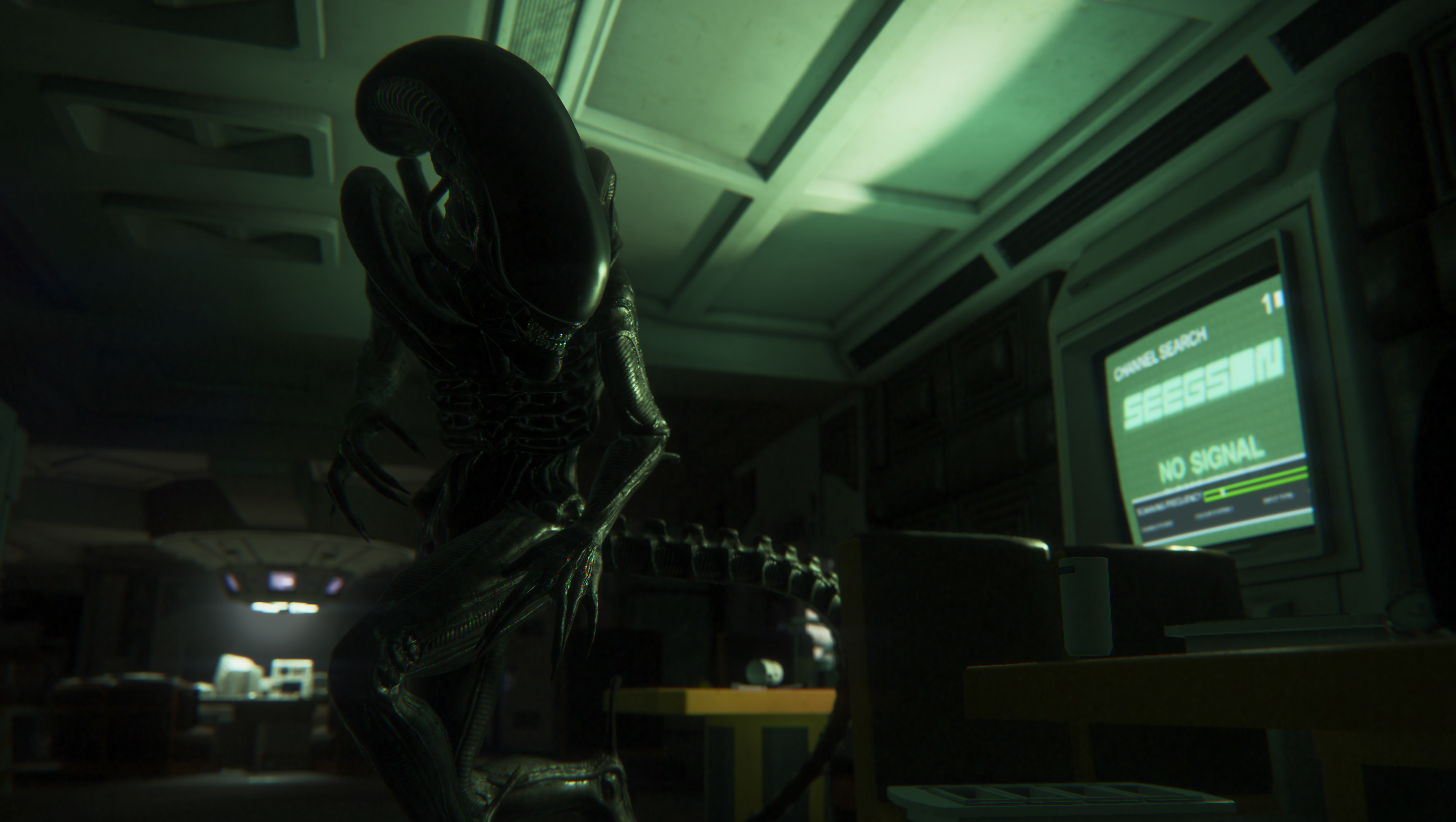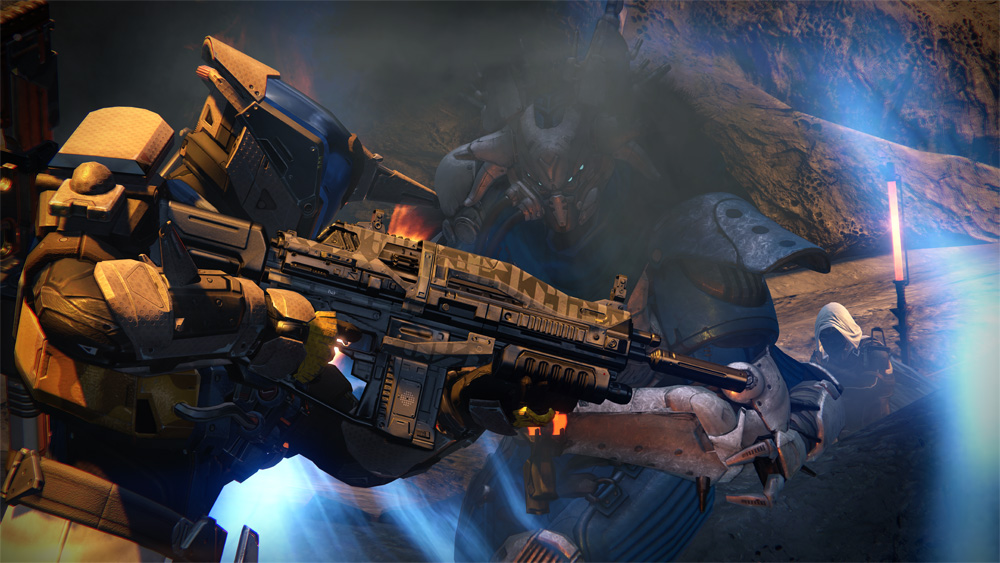Writer Gavin Greene
Game of the Year: Dark Souls II (PlayStation 3, Xbox 360, PC)
It wasn’t until after I had finished Dark Souls II that my more “hardcore” Souls-playing friends told me that I had so many reasons to hate the action-RPG. They spent hours of our mutual time going over just how diminished the final game was from what we (usually meaning they) had waited for. From Software dropped the dynamic lighting from the demos and trailers, the physics had devolved, the environments became too sparse; a thousand complaints at every level of the game’s design.
Whether you chalk it up to my naiveté (this being the first Souls game I played in true earnest) or the solid foundation and gameplay core of Dark Souls II, I hardly cared. Whether it was during my initial 60 hour playthrough or the several times I returned (post-fanboy ravings) to play the later DLC, no game this year absorbed me like Souls II. I hung on every possible hint to the vague, sparsely threaded story. The morbid possibilities that flitted about the corner of my eye in each new area made it impossible to pick up and play for less than two hours.
Dark Souls II is a game of flirtatious tension. The lack of practical explanation for anything made you realize rather quickly whether you as a player had the gall to experiment with that new weapon or spell and put the tens of thousands of souls you had collected at risk. Your safety isn’t the only thing in jeopardy; your comfort is as well. From Software even managed to tweak its multiplayer component, creating something that could surround you with other players and still have you feeling desperately alone in their world.
And yeah, I played as a magic-user. And I’m not sorry.
Runner Up #1: Dragon Age: Inquisition
Runner Up #2: Middle-Earth: Shadow of Mordor
Writer Stefanie Fogel
Game of the Year: Hearthstone: Heroes of Warcraft (PC and iOS)
I’ve never had much interest in collectible card games, outside of a brief infatuation with Magic: The Gathering in my junior year of college. But that changed after I started playing Hearthstone: Heroes of Warcraft.
Blizzard’s entry in the CCG genre is accessible and addictive. It exemplifies the phrase “easy to learn, difficult to master.” Its rules are simple compared to other card games, yet it always presents a new strategy to master or deck to try, and it’s this constant experimentation coupled with the desire to improve that makes Hearthstone great.
Hearthstone has held my interest in a way no other game has this year. I’ve spent countless hours browsing online guides and watching YouTube videos and Twitch streams. I’ve worked hard to climb the rankings with my favorite decks (Shaman and Mage at the moment) and improve my win-loss rate in the Arena, the mode where you pick 30 random cards and play as long as you can before losing three matches.
Plus, did I mention it’s completely free? Not only is it free, but it’s free in a way that feels fair. None of Hearthstone’s content is gated; every card, Arena run, or adventure can be purchased with in-game gold you earn through daily quests and winning matches. Someone who never spends a single cent can still be a competitive player — eventually. Blizzard’s business model is a refreshing change from the “pay to win” mentality of other free-to-play games, and it’s one of the many reasons Hearthstone will have a permanent home on my iPad for the foreseeable future.
Runner-up #1: The Wolf Among Us
Runner-up #2: Dragon Age: Inquisition
Writer Rory Appleton
Game of the Year: The Banner Saga (PC, Mac, iOS, Android)
The key to a great indie game is originality. The best cloak themselves in unique features and force their way into the conversation. That’s why it’s fitting that in 2014 — a year with many great blockbuster RPGs like Shadows of Mordor and Dragon Age: Inquisition — the greatest of them all was The Banner Saga.
The Banner Saga is the first part of a trilogy developed by three former BioWare employees at their newly formed Stoic Studio. These men brought veteran skill and blockbuster polish to the game, which manages to stick out almost a full year after its release due to a lasting impression left on all who play it.
From the first second I loaded The Banner Saga, I knew it was something different. The vibrant, colorful world is clearly rooted in Norse mythology, but the developers made the brilliant move of creating their own cast of creatures to fill the snowy lands. Players must lead companies of men and Varl against the evil Dredge, who have risen from the netherworld to bring civilization to an end. The resulting narrative gives a realistic feeling of just how much suffering war brings to the populace while also transporting players to a unique fantasy realm.
The Banner Saga delivers the total package in sensory stimulation. The beautiful art provides an unmatched visual appeal. The musical score — composed by Austin Wintory, the only person ever nominated for a Grammy for a video game’s soundtrack — is perhaps the greatest in all of gaming history. Finally, a challenging and heart-wrenching storyline invokes every emotion your heart and head can produce. All of these features blended together wonderfully to create the best gaming experience of 2014.
Runner-up #1: South Park: The Stick of Truth
Runner-up #2: Wasteland 2
Writer Miguel Concepcion
Game of the Year: The Last of Us Remastered (PlayStation 4)
I’m hard-pressed in trying to come up with another dystopian game world that articulates the indifference of the universe more beautifully than The Last of Us. Its wholly scenic presentation of North American urban decay echoes the travel guide cliche of a place worth visiting but not worth living in. The PlayStation 3 version was detailed and visually captivating in its own right, but experiencing it in 60 frames-per-second fluidity in the Remastered version made for an unexpectedly fresh playthrough.
It’s a world I’m continually addicted to, but only in 30 minute to 45 minute daily sessions. To play any longer would wear me down spiritually. It’s not hard to find stories in games that instills a pervasive sense of hope in their outcomes. It’s more difficult to find a story like The Last of Us where that hope is sternly tempered with cautious optimism, which also complements its theme of moral ambiguity.
For fans who only had the time and the emotional fortitude to play last year’s version once, The Last of Us Remastered is a fine an opportunity as any to attempt a playthrough on Survivor mode. This setting deprives you of the superhuman ability to see through walls. This level of realism filled me with conflicting feelings of positive anticipation and dread. I began every session with a deep inhale and an exhale of the words, “Here we go again… .”
The Last of Us Remastered, in its Director’s Cut-level completeness, is emblematic of a year that saw an inordinate amount of upgraded re-releases, the likes of which we may never see ever again across another 12-month period. From Tomb Raider to Metro and many others, these reissues rewarded procrastinators for skipping the original versions, while still warranting a revisit by those who bought these the first time around.
Runner-up #1: Far Cry 4
Runner-up #2: Alien Isolation
Writer Stephen Kleckner
Game of the Year: Alien: Isolation (PlayStation 4, Xbox One, PC)
After prolonged exposure to the radiation that fumes behind the curtain of the games business, the portions of the brain that generate hype for new products hardens and dies. I’ve experienced so many years of either being fed marketing hyperbole for creatively bankrupt releases or seeing ideas that enter the development machinery as incredibly promising concepts wind up twisted into banality by the time it is popped out the other end.
This has made me guarded against fully immersing myself into anticipation for anything in games. So when I had heard about Alien: Isolation’s concept, I wanted to believe the marketing and allow myself to be fully immersed in anticipation for it. Sega and Creative Assembly were taking a courageous step away from the safe, high action games the franchise has been falling back on. They promised a game that was slower paced, with a creature that behaved exactly how it was originally intended. They promised to make the Alien terrifying again.
When Alien: Isolation released, it was technically clunky, needed some work on its pacing, and had some design ideas that I felt needed tweaking. With so much criticism, it doesn’t sound like a game of the year, does it? But for me, it’s my Game of the Year. Because what Alien: Isolation nailed was important.
It was what Creative Assembly promised me: a stealth adversary that is unpredictable, ruthless, and smart. The creature became a polygon nightmare that I could not fully escape, always making sure I knew it was lurking in the vents. That it was only one slither out of an air shaft away from terrorizing me.
Sure, with Alien: Isolation Creative Assembly created the best game in the franchise, hands down, and redeemed Sega for its recent Alien: Colonial Marines fumble. But more important, it is one of the few commercial games in the last decade where my investment in hype was paid back.
Writer Paul Semel
Game Of The Year: Destiny (PlayStation 4, Xbox One, PlayStation 3, Xbox 360)
The story is anemic, the missions are redundant, and you can’t turn off the terrible, terrible music … so why the heck did I love Destiny so much? Sure, I’m totally into sci-fi games and first-person shooters, but it was more than that. Not only is Destiny basically Halo meets Call of Duty, but it’s the best Halo game since 2007’s Halo 3 and the best Call of Duty since 2009’s Black Ops. Heck, if Destiny had Nazis, a theme song from Rush, and Pauley Perrette voicing a snarky alien, they could’ve called it Paul Semel’s Destiny.
But the biggest thing Destiny has going for it — and it’s something almost no other game has this year — is its effortless quality. It’s one of the few games in which you sit down to play for just 20 minutes, but then you realize that four hours have passed, and where the hell are my pants? Oh, screw it, one more mission won’t hurt.
Oh, and here’s the kicker (and I say all of this as someone who doesn’t play well with others): You know those massive raids that come after the main story missions, the ones that everyone raves about? I’ve never played one of them. Never wanted to. Aside from a couple strikes and some multiplayer, I only played the story missions. And once I finished the story, I put the disc in a drawer, where it will sit until I play Destiny a second time. And then a third. And probably a fourth when they conclude the saga and I play all three or four or however many games it ends up being in a row. Because that’s how much I loved Destiny.
Runners-up #1: Zen Pinball 2 for PlayStation 4, Pinball FX 2 for Xbox One
Runner-up #2: Wolfenstein: The New Order
VentureBeat's mission is to be a digital town square for technical decision-makers to gain knowledge about transformative enterprise technology and transact. Learn More







